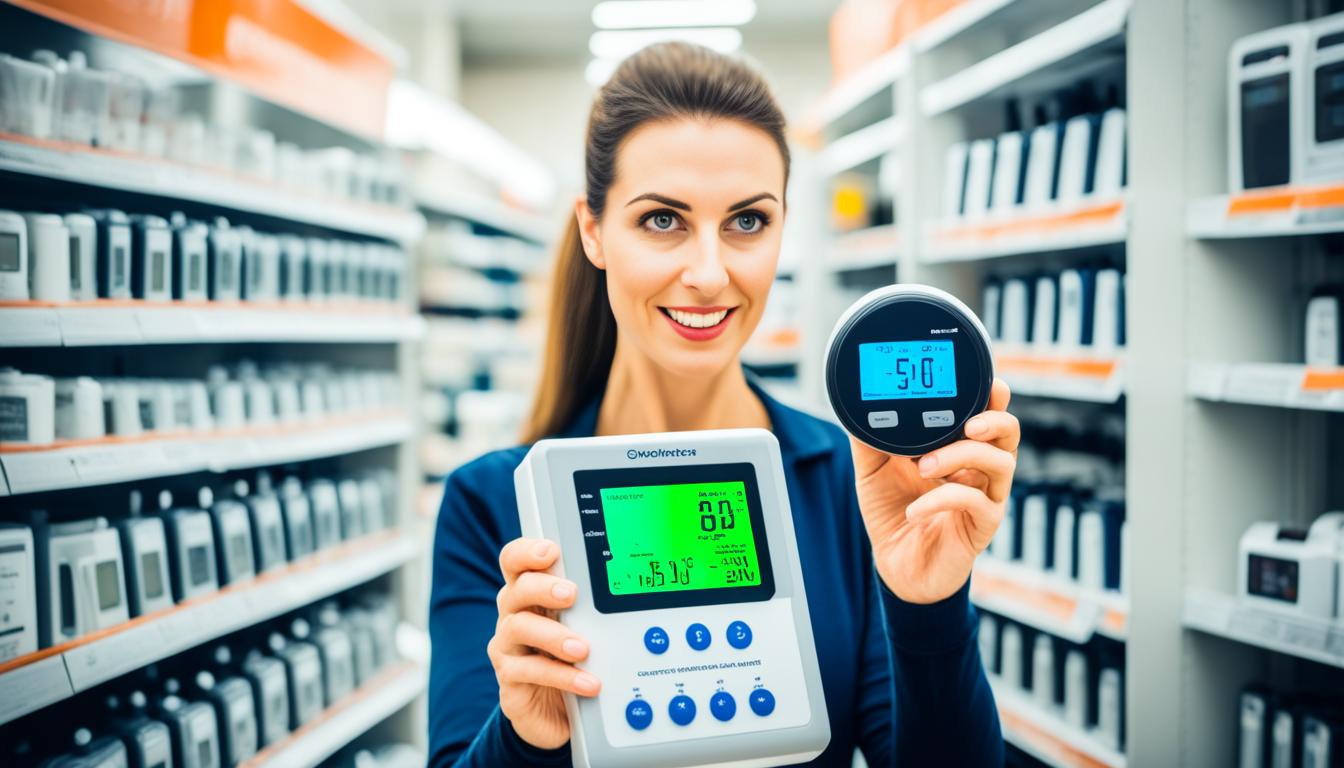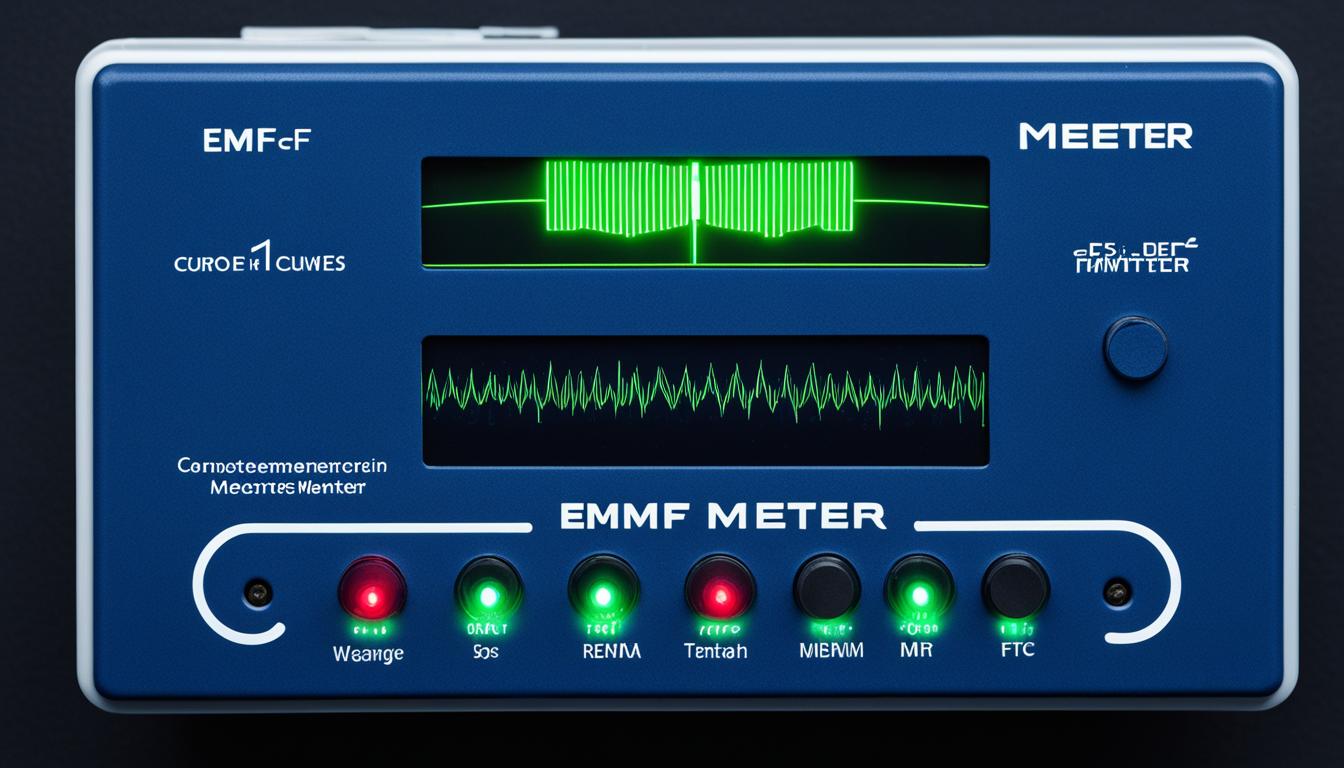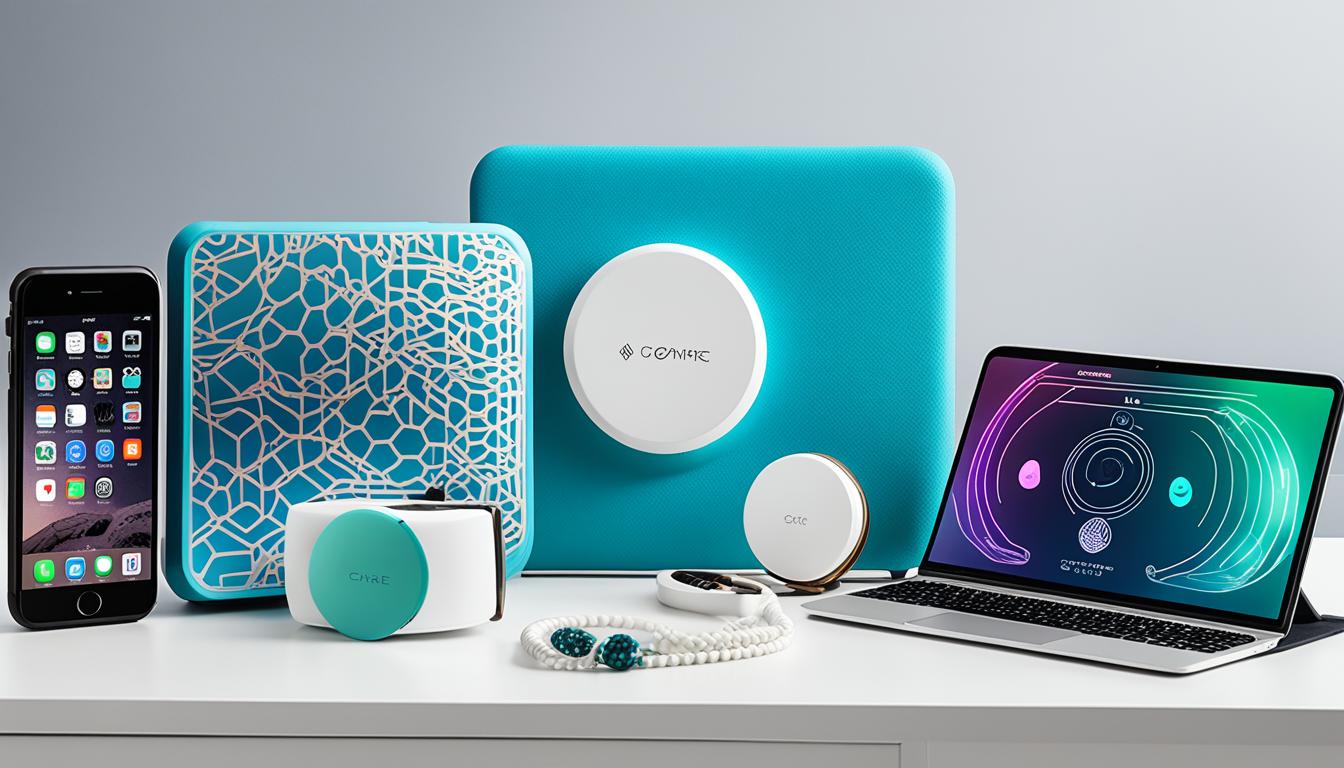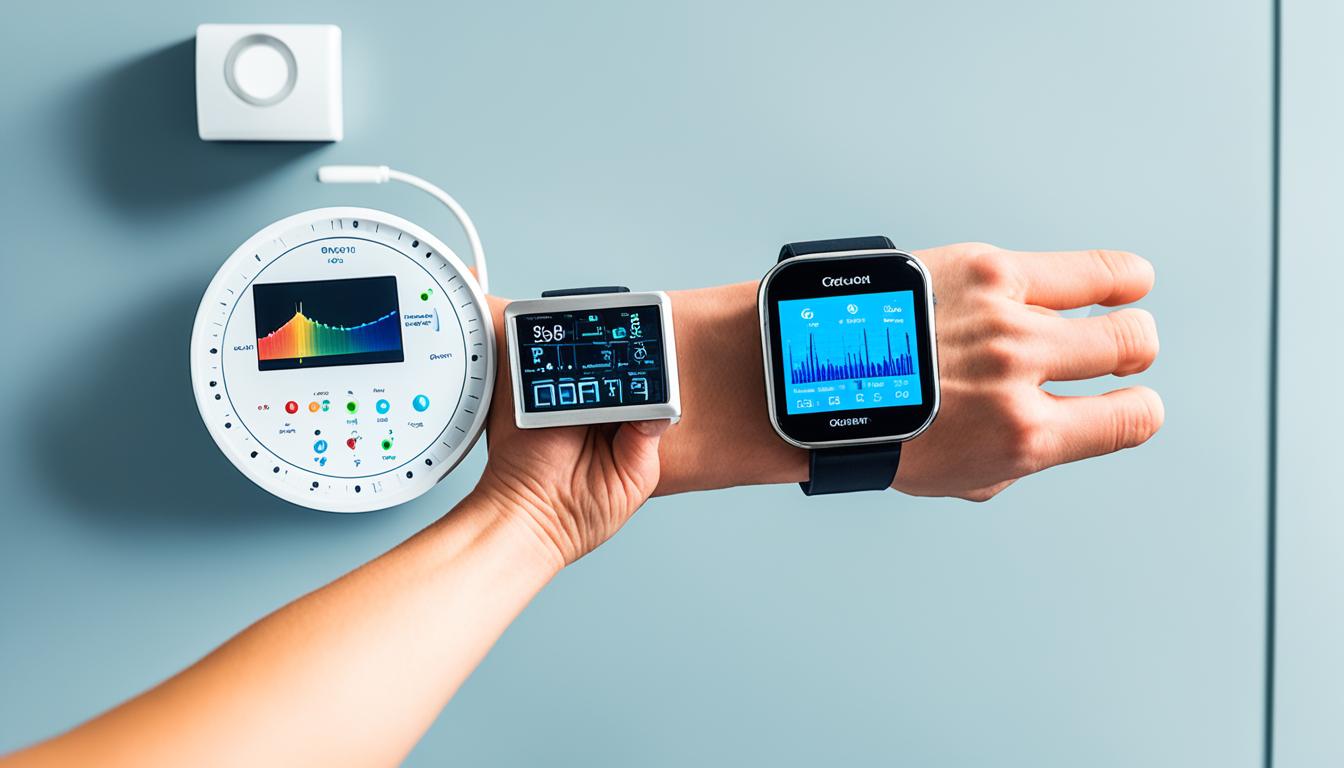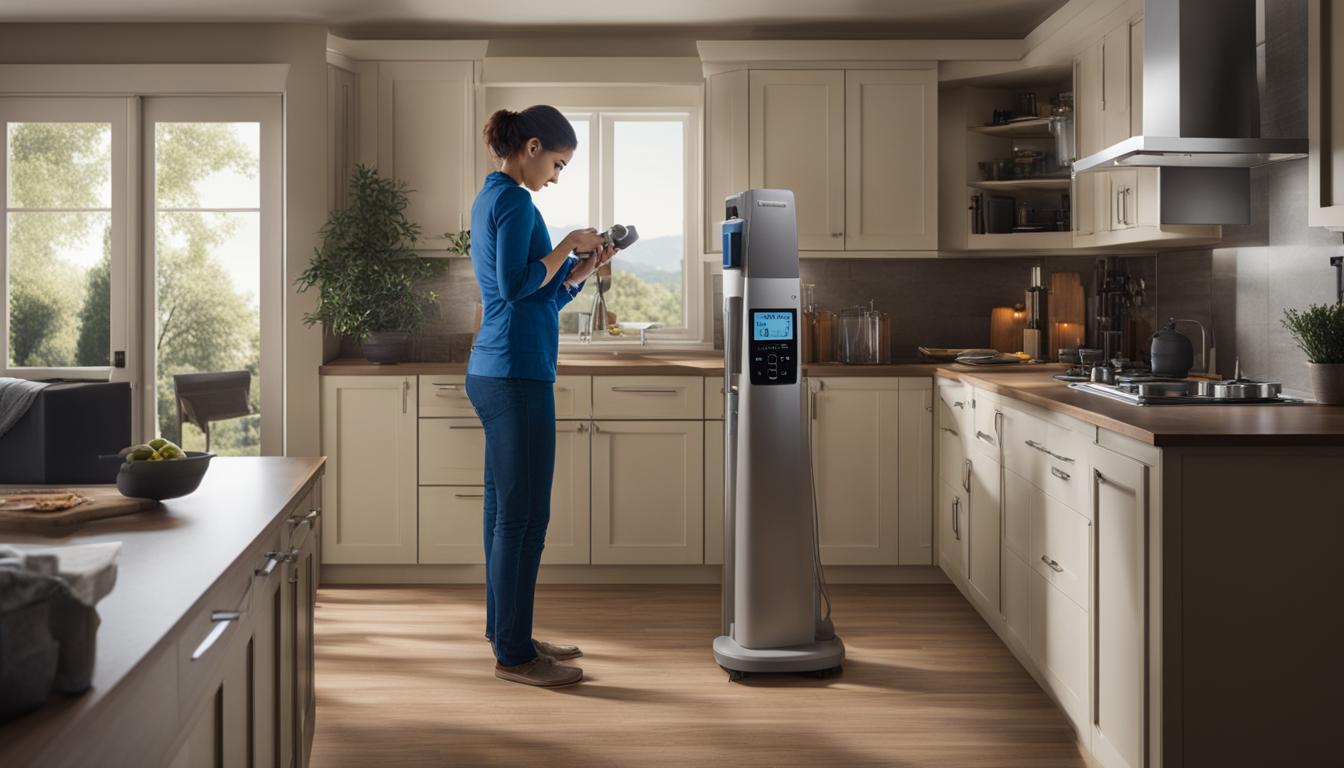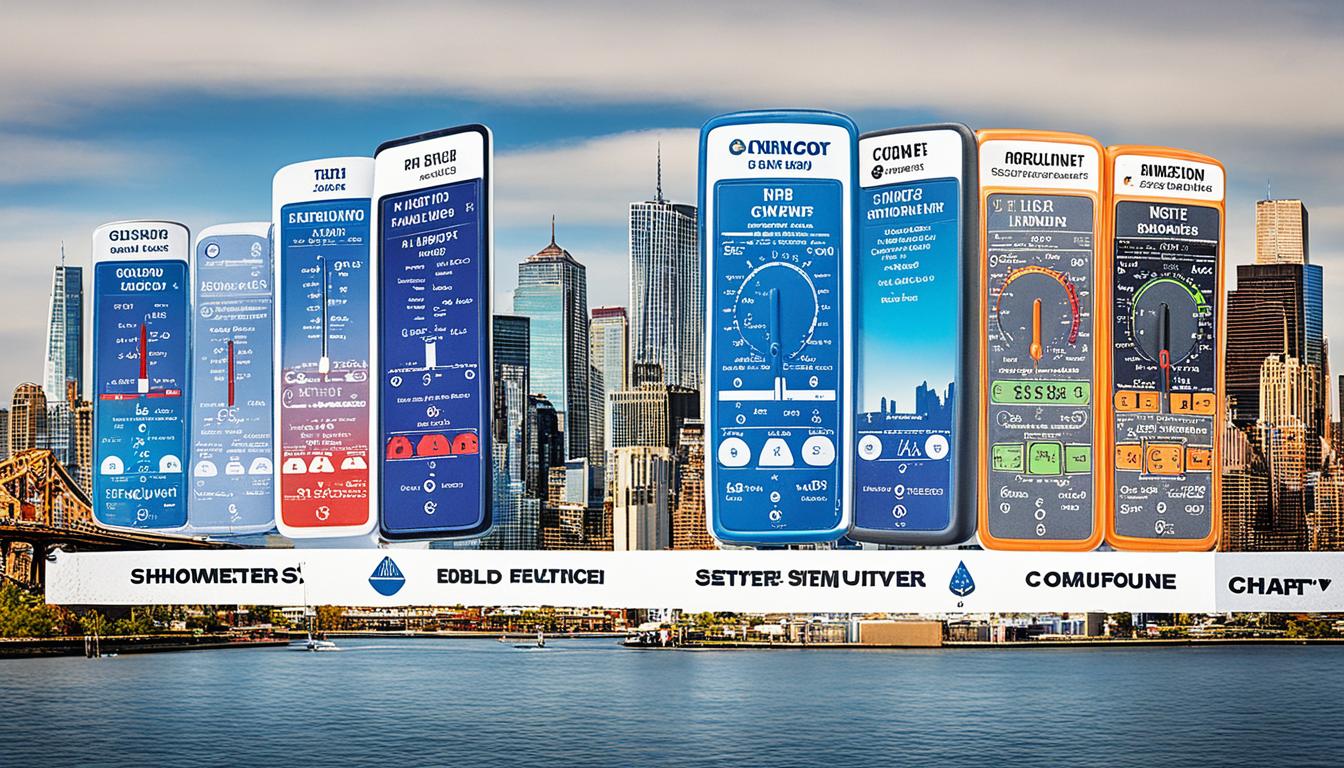Disclosure: This Post Contains Affiliate Links; We earn a commission on purchases.
Are you concerned about the potential health effects of electromagnetic fields (EMF) exposure? Do you want to purchase an EMF meter but don’t know where to start? In this guide, we will provide you with the information and tips you need to select the perfect EMF meter for your safety and research needs. We will cover what EMFs are, the health risks associated with them, and the different types of EMF meters available in the market.
Key Takeaways:
- Understand the potential health risks associated with EMF exposure.
- Familiarize yourself with the different types of EMFs and their effects.
- Explore the various types of EMF meters available in the market.
- Consider key features such as accuracy, sensitivity, and data display options when selecting an EMF meter.
- Compare and evaluate different EMF meter models to find the one that best suits your needs.
Understanding EMFs and Their Effects
EMFs, or electromagnetic fields, are a form of radiation produced by electrical wiring, wireless devices, and power lines. They encompass a wide range of frequencies, including radio waves, light waves, gamma rays, and X-rays.
Many countries have implemented limits on EMF exposure due to the potential health risks associated with prolonged or excessive exposure. Although the effects of EMFs on health are still being studied, there have been reports of various symptoms that may be linked to EMF exposure.
Headaches, fatigue, insomnia, and other symptoms have been reported by individuals who believe they have been affected by EMFs. While the scientific community continues to investigate the relationship between EMFs and these symptoms, it’s important to be aware of the potential risks when choosing an EMF meter.
Understanding the potential health risks and symptoms associated with EMF exposure can aid in making an informed decision when selecting an appropriate EMF meter to monitor and mitigate potential risks.
If you want to visualize how it spreads, take a look at the image below:
| Symptoms | Description |
|---|---|
| Headaches | Regular or frequent headaches |
| Fatigue | Feeling tired or exhausted without apparent cause |
| Insomnia | Difficulty falling asleep or staying asleep |
| Brain fog | Difficulty concentrating or mental confusion |
| Tinnitus | Ringing or buzzing in the ears |
It’s important to note that these symptoms can be caused by various factors, and further research is needed to establish a definite connection between EMFs and these health issues. However, understanding the potential risks and being proactive in monitoring EMF levels can contribute to a healthier living environment.
Types of EMF Meters
When it comes to detecting and measuring electromagnetic fields (EMFs) in your environment, there are different types of EMF meters available. These meters are designed to help you accurately assess the levels of EMFs and identify potential sources of exposure. Here are some commonly used types of EMF meters:
1. AC Magnetic Field Meters
AC magnetic field meters are specifically designed to measure the alternating magnetic fields produced by power lines, electrical appliances, and other sources. They provide valuable information about the strength and intensity of these fields, helping you identify areas with high EMF levels.
2. DC Field Meters
DC field meters, on the other hand, are used to measure the direct current fields present in your environment. These fields typically come from sources such as batteries, direct current power lines, and certain electronic devices. By measuring and analyzing DC fields, you can gain a comprehensive understanding of the EMF exposure in your surroundings.
3. Radio Frequency Meters
Radio frequency (RF) meters are designed to detect and measure the levels of RF radiation emitted by wireless devices, cell towers, Wi-Fi networks, and other sources. These meters are invaluable in assessing the potential health risks associated with RF exposure and identifying areas with excessive RF radiation.
4. Electric Field Meters
Electric field meters are used to measure the electric fields generated by electrical wiring, power lines, and electrically charged objects. These meters can help you identify areas with high electric field intensities and assess the potential EMF exposure in those locations.
Single-Axis vs. Tri-Axis Meters
EMF meters come in two main configurations: single-axis and tri-axis. Single-axis meters measure EMFs in one direction at a time, while tri-axis meters can detect EMFs in three dimensions simultaneously. Tri-axis meters are generally more accurate and efficient, especially when measuring EMFs from multiple sources or when conducting thorough EMF assessments.
When considering an EMF meter, it’s essential to choose one that aligns with your specific needs and can measure the frequencies relevant to your environment. Understanding the different types of meters available will empower you to make an informed decision and effectively measure EMFs in your surroundings.
Key Features to Consider
When selecting an EMF meter, it’s essential to consider the key features that will meet your specific needs. These features play a crucial role in providing accurate and reliable readings, allowing you to monitor and mitigate potential risks associated with electromagnetic fields (EMFs).
Accuracy and Sensitivity
The accuracy and sensitivity of an EMF meter are vital for obtaining precise measurements. A high-quality meter will provide you with reliable readings, ensuring you have accurate information about the EMF levels in your environment. This enables you to make informed decisions and take necessary steps to reduce potential health risks.
Frequency Range
EMFs can be emitted at different frequencies by various sources. It’s crucial to choose an EMF meter that has a wide frequency range, allowing you to measure EMFs across different frequency bands. This ensures comprehensive detection and measurement capabilities, providing a more thorough assessment of your exposure to EMFs.
Data Display Options
The way data is displayed on an EMF meter can significantly impact its usability and convenience. Some meters feature simple color-coded lights, making it easy to understand the intensity of the detected EMFs at a glance. Others provide numerical readouts, offering precise measurements for more detailed analysis. Additionally, certain meters include audible cues, alerting you to the presence of specific frequencies or sources. Consider your preferences and the level of information you require when choosing an EMF meter with the appropriate data display options.
Informed decision-making requires accurate readings, wide frequency detection, and user-friendly data display.
By considering these key features, you can confidently choose an EMF meter that meets your needs and empowers you to proactively manage your exposure to EMFs. Now, let’s compare some of the popular EMF meters available in the market to further assist you in making the right choice.
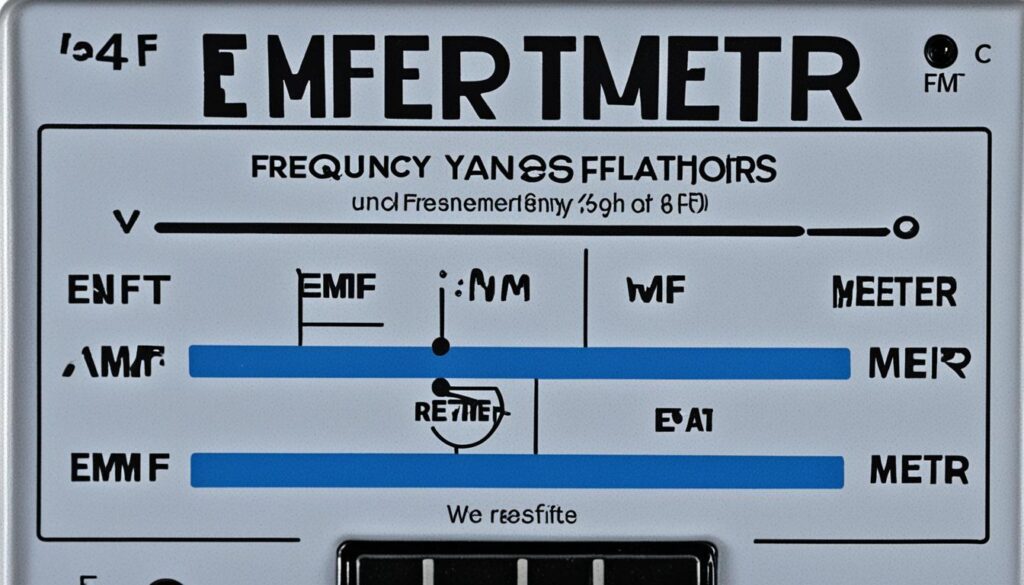
| EMF Meter Model | Accuracy | Sensitivity | Data Display |
|---|---|---|---|
| Safe and Sound Pro II RF Meter | High | High | Color-coded lights, numerical display |
| Safe and Sound Classic II | Medium | Medium | Color-coded lights |
| Trifield EMF Meter Model TF2 | High | High | Color-coded lights, numerical display |
| Safe and Sound Micro RF Detector | Medium | Medium | Color-coded lights, audible cues |
| Tenmars EMF Meter Model TM-190 | High | High | Color-coded lights, numerical display |
| OEM EMF Meter Frequency Tester | Low | Medium | Color-coded lights, numerical display |
Comparing EMF Meters
When it comes to selecting the right EMF meter for your needs, there are several top options available in the market. Each of these meters offers unique features and capabilities, allowing you to determine which one best suits your requirements. Here are some of the top EMF meters for comparison:
- Safe and Sound Pro II RF Meter
- Safe and Sound Classic II
- Trifield EMF Meter Model TF2
- Safe and Sound Micro RF Detector
- Tenmars EMF Meter Model TM-190
- OEM EMF Meter Frequency Tester
Each of these models has its own distinct features that make it suitable for different applications. By comparing these EMF meters, you can find the one that best meets your specific needs. Whether you’re looking for advanced radio frequency detection, reliable measurement accuracy, or a compact portable design, there is an EMF meter on this list that will suit your requirements.
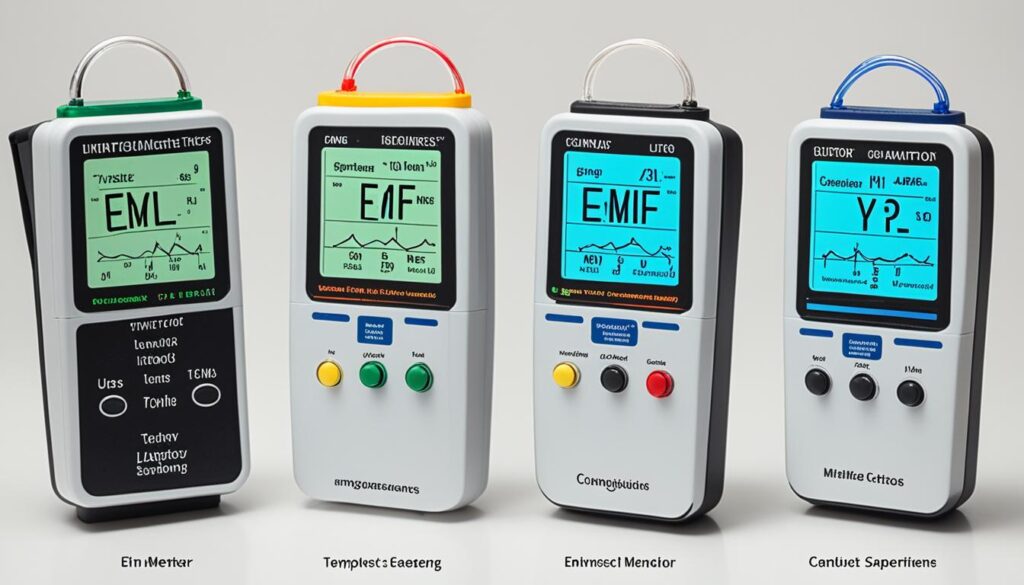
Importance of Having an EMF Reader for Your Home
Having an EMF reader for your home is crucial in today’s modern world. With the increasing use of electronic devices and wireless technologies, electromagnetic fields (EMFs) have become a part of our daily lives. However, excessive EMF exposure can have significant health impacts, making it essential to monitor and control your EMF environment.
Various studies have suggested a potential link between EMF exposure and adverse health effects, including an increased risk of cancer. Other health issues such as insomnia, anxiety, and nausea have also been associated with EMF exposure. By having an EMF reader in your home, you can easily measure and track the levels of electromagnetic radiation in your environment, allowing you to take proactive steps to minimize any potential risks.
EMF readers provide peace of mind by empowering you to make informed decisions about your living environment. By understanding the levels of EMFs in different areas of your home, you can identify and eliminate potential sources of high EMF exposure. This can include rearranging furniture, adjusting the placement of electronic devices, or taking measures to shield your living spaces from outside sources such as power lines and cell towers.
An EMF reader helps you create a safer living environment for you and your family. By monitoring and reducing EMF exposure, you can mitigate potential health risks and promote overall well-being. Whether it’s by choosing low-EMF appliances, optimizing your Wi-Fi settings, or implementing EMF shielding techniques, having an EMF reader puts you in control of your health and the EMF environment in your home.
Take the proactive step of investing in an EMF reader for your home today and ensure a healthier, safer living environment for you and your loved ones.
| EMF Reader | Key Features |
|---|---|
| 1. Safe and Sound Pro II RF Meter | – Measures radio frequencies and AC magnetic fields |
| 2. Safe and Sound Classic II | – Detects radio frequencies and provides visual and audio alerts |
| 3. Trifield EMF Meter Model TF2 | – Measures AC magnetic fields, electric fields, and radio frequencies |
| 4. Safe and Sound Micro RF Detector | – Detects radio frequencies and offers an easy-to-read LED display |
| 5. Tenmars EMF Meter Model TM-190 | – Measures AC magnetic fields and electric fields with a high level of accuracy |
| 6. OEM EMF Meter Frequency Tester | – Covers a broad frequency range for comprehensive EMF detection |
Choosing the Right EMF Reader
When it comes to selecting an EMF reader, there are several important factors to consider. By evaluating the capabilities and features of different models, you can make an informed decision that best meets your specific needs. Here are some key considerations to keep in mind:
- Determine your primary purpose: Start by identifying the main reason you need an EMF reader. Are you specifically concerned about 5G radiation? Do you require a reader for general home use or more professional applications? Knowing your primary purpose will help narrow down your options and ensure that the reader you choose aligns with your specific requirements.
- Evaluate accuracy and sensitivity: The accuracy and sensitivity of an EMF reader are crucial for obtaining reliable and precise measurements. Look for meters that are known for their accuracy and can detect even the smallest variations in electromagnetic fields.
- Consider data display options: Different EMF readers offer varying ways to display the collected data. Some readers use color-coded lights to indicate the intensity of the electromagnetic field, while others provide numeric readouts. Choose a reader with a data display style that you find easy to interpret and understand.
- Ensure frequency range coverage: The frequency range that an EMF reader can detect is vital, as different sources emit electromagnetic fields at various frequencies. Check that the reader you select is capable of detecting the specific frequencies relevant to your environment.
- Opt for tri-axis meters: Tri-axis meters are generally considered more efficient and accurate compared to single-axis meters. Tri-axis meters can measure EMFs from different sources simultaneously, providing a more comprehensive assessment of your environment.
- Consider 5G frequency detection: With the increasing prevalence of 5G technology, it’s essential to ensure that your chosen EMF reader is capable of measuring 5G frequencies. If 5G radiation is a concern in your environment, verify that the reader you select is equipped to detect these frequencies.
By carefully considering these factors and conducting thorough research, you can choose an EMF reader that best suits your needs and provides accurate measurements of electromagnetic fields in your environment.
| EMF Meter | Features | Frequency Range | Accuracy |
|---|---|---|---|
| Safe and Sound Pro II RF Meter | Tri-axis measurement, RF detection, audio cues | 10 Hz – 8 GHz | High |
| Safe and Sound Classic II | Single-axis measurement, 3-color LED display | 20 Hz – 6 GHz | Moderate |
| Trifield EMF Meter Model TF2 | Tri-axis measurement, magnetic, electric, RF detection | 40 Hz – 100 kHz (AC Magnetic), 40 Hz – 100 kHz (AC Electric), 20 MHz – 6 GHz (RF) | High |
| Safe and Sound Micro RF Detector | Single-axis measurement, RF detection, portable | 20 MHz – 6 GHz | Moderate |
| Tenmars EMF Meter Model TM-190 | Tri-axis measurement, AC/DC magnetic and electric field detection | 20 Hz – 400 kHz | High |
| OEM EMF Meter Frequency Tester | Single-axis measurement, wide frequency range | 5 Hz – 400 kHz | Moderate |
Conclusion
Choosing the right EMF meter is crucial for accurate measurements of electromagnetic fields in your environment and protecting yourself from potential health risks. By understanding the different types of EMFs, their effects on your health, and the key features to look for in an EMF meter, you can make an informed decision and ensure your safety.
Comparing different models and considering your specific needs will help you find the perfect EMF meter that suits your requirements. Whether you’re looking for a meter for general home use, professional applications, or to check for specific frequencies like 5G radiation, there are options available to meet your needs.
Having an EMF reader for your home provides numerous benefits. It allows you to monitor the levels of electromagnetic radiation in your environment, giving you peace of mind and the ability to take necessary steps to reduce any potential risks. With an EMF reader, you can create a safer living environment for yourself and your family, protecting against potential health impacts of EMF exposure.
Source Links
- https://aussecurityproducts.com.au/blogs/posts/buyers-guide-how-to-select-the-ideal-emf-meter-for-your-needs
- https://emf-protection.com/the-ultimate-guide-to-buying-an-emf-meter/
- https://www.roomhints.com/4-hints-to-buy-the-right-emf-reader-for-your-home/

Subscribe to Our Newsletter

